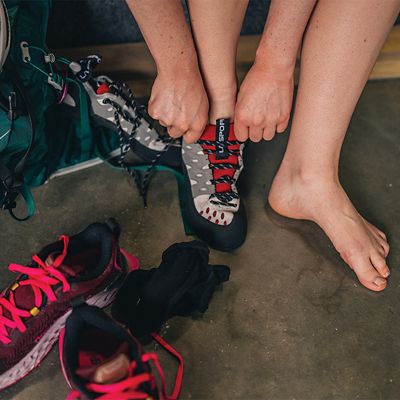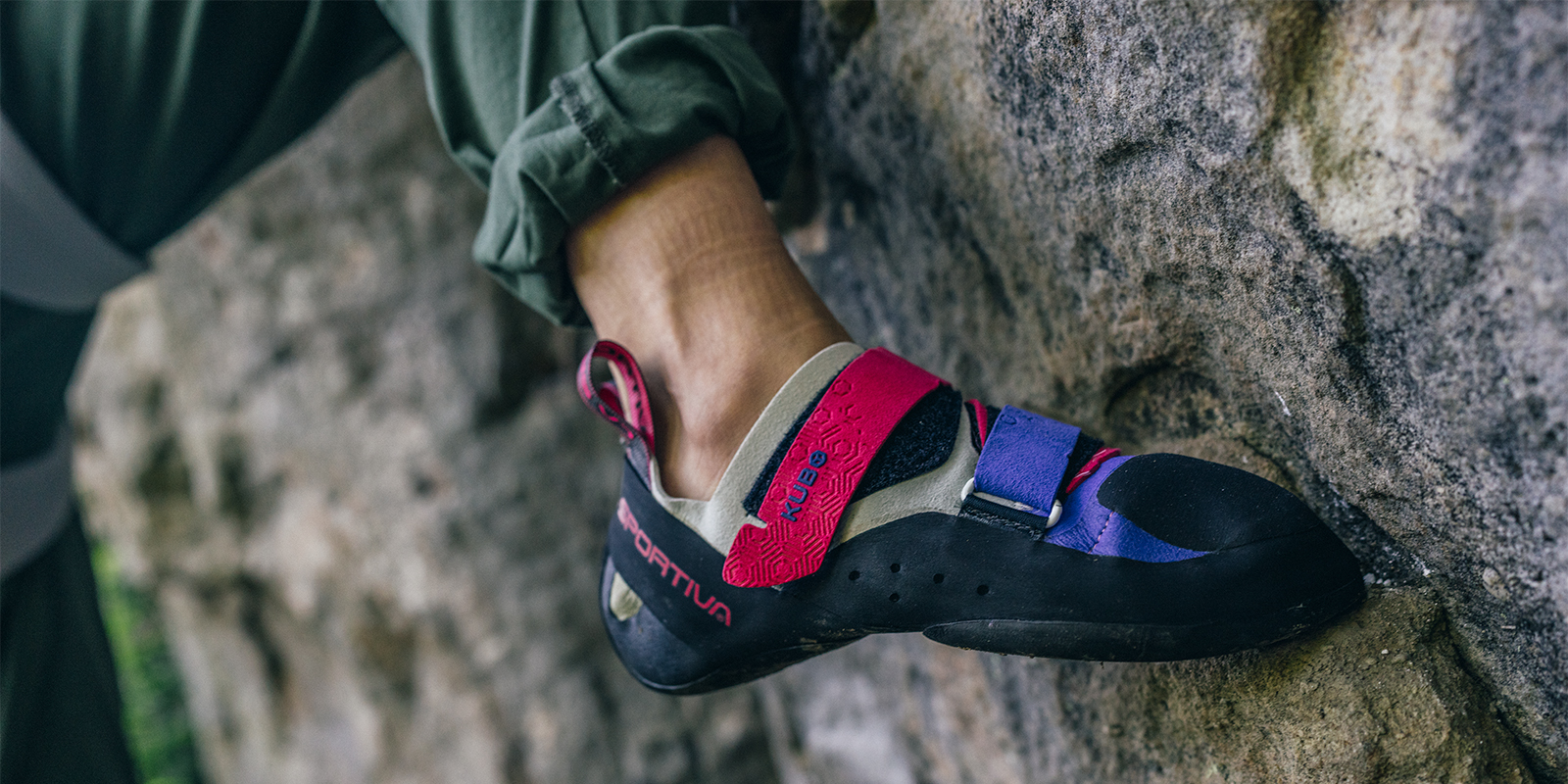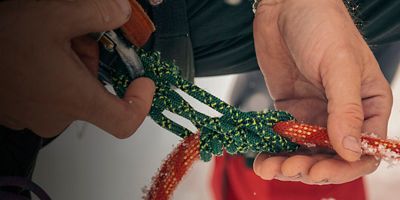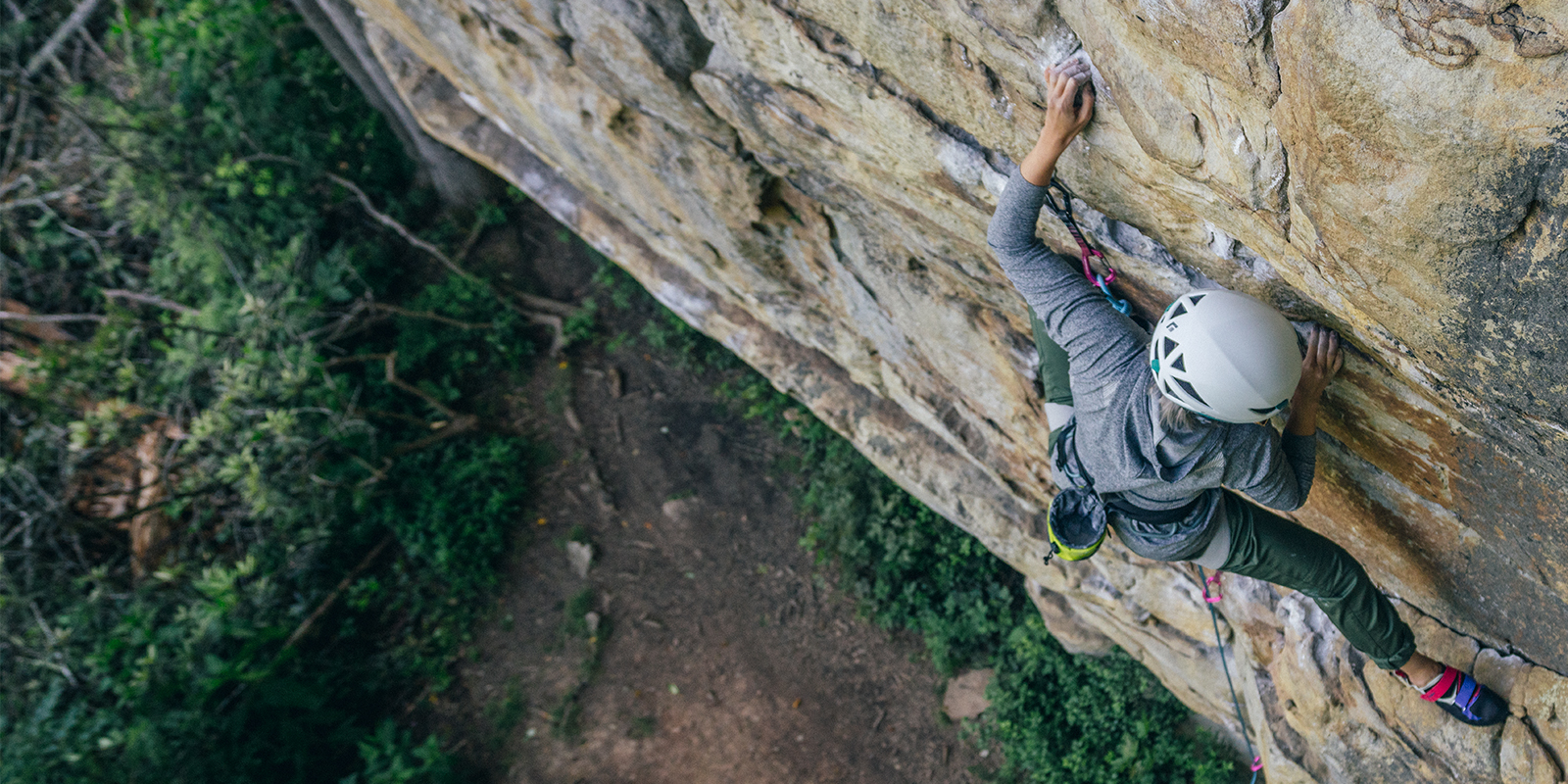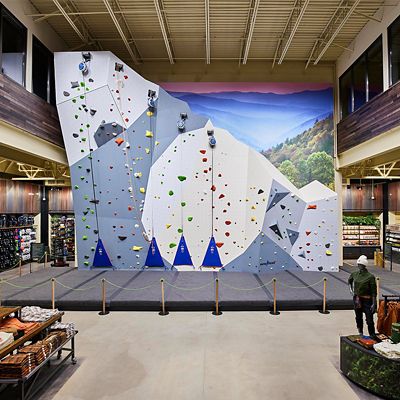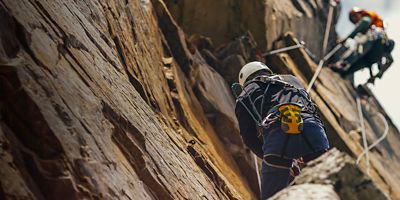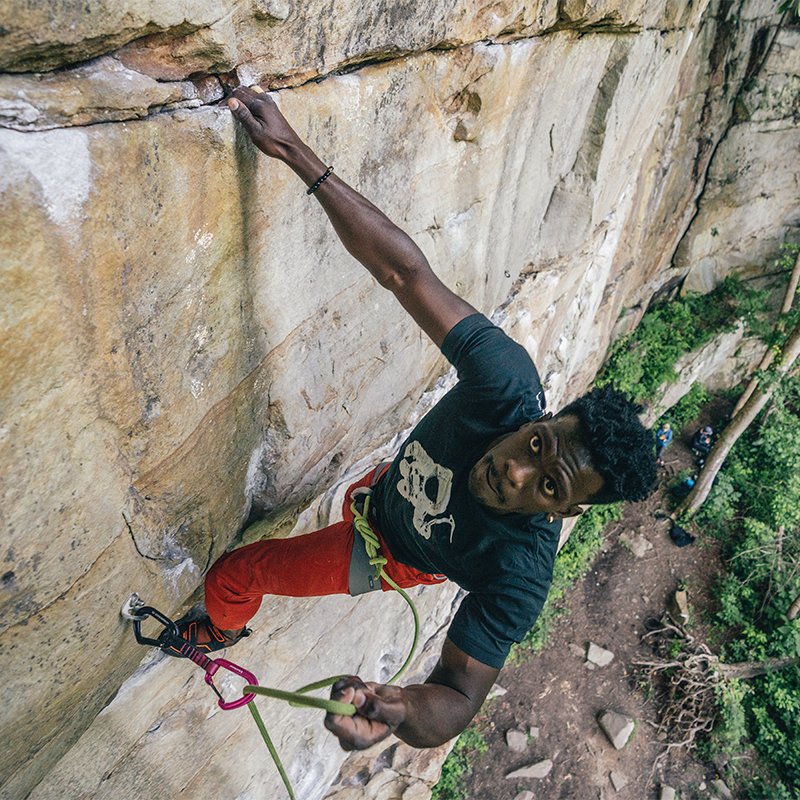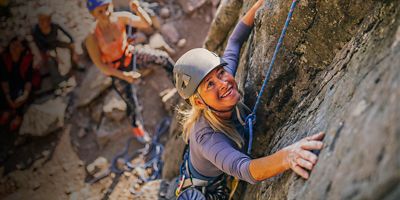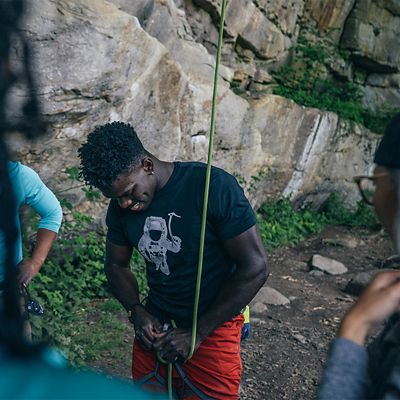The climbing trope that, “the summit is only halfway,” is too easy to forget. After the excitement of getting to the top, climbers still need to get back down. And if there’s no safe way to go by foot, then rappelling—descending a slope or cliff by sliding down a rope—is the preferred method. It’s also thrilling enough that, as an activity in its own right, it can transcend the whole climbing up part. Heading on a vacation to the Caribbean? Try “rapping” down rushing jungle waterfalls. Bushwhacking your way up a Colorado 13er? Packing a rope and harness can keep you from getting stranded atop a cliff. But understanding how to use that gear to rappel safely is the real key. Even experienced rock climbers can turn a descent into a disaster by cutting corners (rappels are a major source of climbing accidents). With a little experience, education, and patience, rappelling can be nearly foolproof—not to mention a fun way to experience the vertical world.
Gear Necessities
A hemp cord slung over your shoulder like the alpinists of old isn’t going to cut it for a safe rappel. Here’s what you should be carrying.
Rope
This should go without saying, but is a surprisingly common mistake: Make sure you have a rope that can get you from the top all the way to the bottom, with room to spare. You do not want to discover the error of rappelling down a rope that’s too short once you’re halfway there (see below for an important step to prevent this accident).
Most of the time, you’ll want the rope to be more than twice the distance you’re hoping to descend. That’s because you often start by anchoring to the middle of the rope and rappelling down both ends simultaneously, which then allows you to retrieve your rope at the bottom by pulling it down on one end.
Harness
Find a harness that’s comfortable to both sit and hang in—it will be supporting all your weight once you’re on the rope. It should fit snug without being tight, and sit above your hip bones.
Friction (Belay/Rappel) Device
There are a lot of different styles of devices to connect your harness to the rope, but the most common is a tube-style belay device like an ATC, which can double as a rappelling device and allow you to pass both strands of the rope through it. These devices “grip” the rope to increase friction on it, while letting you control how quickly the rope slides through. Pro tip: Look at the specifications for your friction device and make sure it accepts the diameter rope that you have.
For the safest rappels, bring an additional sling or webbing-loop personal anchor (sometimes known as a PAS) to extend your friction device from your harness. Placing the device farther from your body gives you more room to work the brake strand, more room for the third hand (see below), and can also serve as a personal anchor while setting up the rappel.
A Good Anchor
This is another piece of the rappelling puzzle that can take many forms. For rock climbers, it’s often a pair of established bolts with chains or carabiners attached. However, a tree, large rock or formation, or other solid fixture can work. The key is that it’s stable and not going to move, no matter how much weight you put on it. Trees should be strong, healthy-looking, and large. Knowing how to build or interpret a safe anchor is a prerequisite for any kind of rappelling.
A “Third Hand”
While not a strict necessity, a backup on the rope can make rappels far safer. Normally if you let go of the rope (maybe you need to untangle some rope, or get hit by falling rock), it will slide through your friction device freely. Having a small piece of cord and a carabiner (read how below) to back up your hands will keep that from happening.







